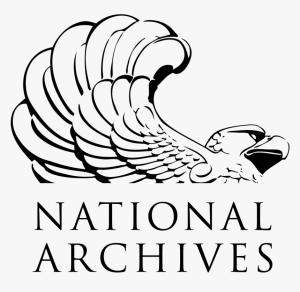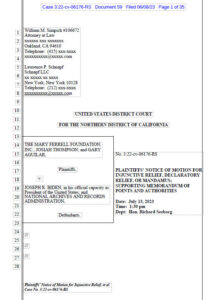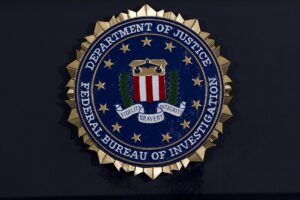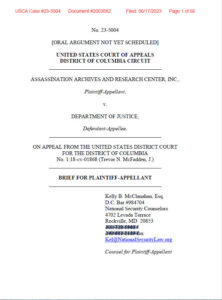 CLICK HERE to visit the National Archives and Records Administration page for metadata about all the released documents. You can also download the spreadsheet as an Excel file ( 162 KB).
CLICK HERE to visit the National Archives and Records Administration page for metadata about all the released documents. You can also download the spreadsheet as an Excel file ( 162 KB).
8 June, 2023 UPDATE: JFK Records Lawsuit
Courtesy of Bill Simpich and the Mary Ferrell Foundation:
 On October 19, 2022, the Mary Ferrell Foundation, a non-profit archive with the internet’s largest collection of searchable JFK records, filed a lawsuit against President Biden and the National Archives for failing to implement the 1992 JFK Records Act. These failures have resulted in confusion, gaps in the records, over-classification, and outright denial of thousands of assassination-related files, five years after the law’s deadline for full disclosure.
On October 19, 2022, the Mary Ferrell Foundation, a non-profit archive with the internet’s largest collection of searchable JFK records, filed a lawsuit against President Biden and the National Archives for failing to implement the 1992 JFK Records Act. These failures have resulted in confusion, gaps in the records, over-classification, and outright denial of thousands of assassination-related files, five years after the law’s deadline for full disclosure.
On April 10, 2023, the MFF filed an amended complaint. The amended complaint highlights the Biden “Transparency Plans” and emphasizes that the Freedom of Information Act (FOIA) should not be the main avenue for the release of additional assassination records. The JFK Records Act states at Section 2(a)(5) that the Act is “necessary” because FOIA “prevented the timely public disclosure” of JFK records.” Similarly, Section 2(a)(6) states that the Act is necessary because other procedures to declassify “national security information” has prevented the timely public disclosure of JFK records. The National Archives should be enforcing the JFK Records Act by forwarding well-founded public requests for additional records to the agencies that have them in their possession.
As of 8 June, 2023, a motion for injunctive relief has been filed.
It is requested that NARA be required to enforce the JFK Act when seeking records from agencies, rather than referring researchers to use FOIA – described in the Act as an ineffective way to obtain assassination records.
* * * * *
Bill Simpich serves on the Board of the AARC. He is a Civil Rights attorney, author of ground-breaking articles focusing on the hidden intricacies of the CIA, and a leading and insightful analyst of the intelligence files associated with Lee Harvey Oswald’s enigmatic episode in Mexico City seven weeks prior to President Kennedy’s assassination. Between August 2010 and January 2015 Bill produced 12 articles on the JFK case which became the backstory to his invaluable work, STATE SECRET: WIRETAPPING IN MEXICO CITY, DOUBLE AGENTS, AND THE FRAMING OF LEE OSWALD.
Read The Twelve Who Built the Oswald Legend by clicking HERE.
Daniel Ellsberg, Who Leaked the Pentagon Papers, Is Dead at 92
Deeply disturbed by the accounting of American deceit in Vietnam, he approached The New York Times. The disclosures that followed rocked the nation.

Daniel Ellsberg, who leaked the Pentagon Papers to the press, surrenders at the U.S. Courthouse in Boston on June 28, 1971, accompanied by his wife at the time, Patricia.Credit…Donald F. Holway/The New York Times
Daniel Ellsberg, a military analyst who experienced a sobbing antiwar epiphany on a bathroom floor and in 1971 disclosed the secret history of American lies and deceit in Vietnam that came to be known as the Pentagon Papers, died on Friday at his home in Kensington, Calif. He was 92.
The cause was pancreatic cancer, his wife and children said in a statement.
In March, Mr. Ellsberg, in an email message to “Dear friends and supporters,” announced that he had recently been told he had inoperable pancreatic cancer, and said that his doctors had given him an estimate of three to six months to live.
The disclosure of the Pentagon Papers — 7,000 pages of damning revelations about deceptions by successive presidents who exceeded their authority, bypassed Congress and misled the American people — plunged a nation that was already wounded and divided by the war deeper into angry controversy.
It led to illegal countermeasures by the White House to discredit Mr. Ellsberg, halt leaks of government information and attack perceived political enemies, forming a constellation of crimes known as the Watergate scandal that led to the disgrace and resignation of President Richard M. Nixon.
And it set up a First Amendment confrontation between the Nixon administration and The New York Times, whose publication of the papers was denounced by the government as an act of espionage that jeopardized national security. The U.S. Supreme Court upheld the freedom of the press.

Mr. Ellsberg was charged with espionage, conspiracy and other crimes and tried in federal court in Los Angeles. But on the eve of jury deliberations, the judge threw out the case, citing government misconduct, including illegal wiretapping, a break-in at the office of Mr. Ellsberg’s former psychiatrist and an offer by President Nixon to appoint the judge himself as director of the Federal Bureau of Investigation.
“The demystification and de-sanctification of the president has begun,” Mr. Ellsberg said after being released. “It’s like the defrocking of the Wizard of Oz.”
The story of Daniel Ellsberg in many ways mirrored the American experience in Vietnam, which began in the 1950s as a struggle to contain communism in Indochina and ended in 1973 with humiliating defeat in a corrosive war that killed more than 58,000 Americans and millions of Vietnamese, Cambodians and Laotians.
He was a brilliant young man from Michigan who had known tragedy at 15, when his mother and sister were killed in a car crash after his father fell asleep at the wheel, and who had rallied to march through prep school, Harvard and the University of Cambridge in England with high honors and lofty, disciplined ambitions.
He joined the Marines in 1954, swept through officer candidate school and extended his enlistment to ship out with his battalion to the Middle East for the Suez crisis in 1956. He saw no action, but mustered out as a first lieutenant with firm ideas about military solutions to international problems.
He earned a doctorate at Harvard, joined the RAND Corporation and began studying game theory as applied to crisis situations and nuclear warfare. In the 1960s, he conferred on Washington’s responses to the Cuban missile crisis and North Vietnamese attacks on American ships in the Gulf of Tonkin.
By 1964, Mr. Ellsberg was an adviser to Defense Secretary Robert S. McNamara. As American involvement in Vietnam deepened, he went to Saigon in 1965 to evaluate civilian pacification programs. He joined Maj. Gen. Edward G. Lansdale, the counterinsurgency expert, and for 18 months accompanied combat patrols into the jungles and villages.
A Grim Realization
What he saw began his transformation. It went beyond the failure to win the hearts and minds of the South Vietnamese. It was a mounting toll of civilian deaths, tortured prisoners and burned villages, a litany of brutality entered in military field reports as “clear and hold operations.”
“I saw it was all very hard on those people,” he told the syndicated columnist Mary McGrory. “But I told myself that living under communism would be harder, and World War III, which I thought we were preventing, would be worse.”
To Mr. McNamara, Mr. Ellsberg forecast a dismal prospect of continued death and destruction, ending perhaps in an American withdrawal and victory for North Vietnam. His reports went nowhere. But Mr. McNamara summoned him in 1967, with 35 others, to compile a history of the Vietnam conflict.
His contribution to the study was relatively modest. But he was deeply disturbed by its sweeping conclusions: that successive presidents had widened the war while concealing the facts from Congress and the American people. In 1968, Mr. Ellsberg returned to RAND, but began quietly acting on his changing views, composing war policy statements for Senator Robert F. Kennedy’s presidential race and attending antiwar conferences.
RELATED: The Most Dangerous Man in America by David Talbot
FBI ELSUR
ELSUR: Electronic Surveillance
AARC has obtained approximately 9000 pages of electronic surveillance indices from FBI ELSUR files, dating back to World War II. These records are a history of FBI’s electronic surveillance activities during the period of the Cold War.
Here are the files associated with litigation initiated by Kel McClanahan, Esq., Executive Director, National Security Counselors on behalf of AARC:
1 – 2019-02-04-20230615T192031Z-001.zip
2 – 2019-02-28-20230615T215052Z-001.zip
3 – 2019-04-01-20230615T215601Z-001.zip
4 – 2019-05-01-20230615T215908Z-001.zip
5 – 2019-06-03-20230615T220307Z-001.zip
6 – 2019-07-01-20230615T221400Z-001.zip
7 – 2019-08-01-20230615T223228Z-001.zip
8 – 2019-09-03-20230615T223505Z-001.zip
9 – 2020-05-19-20230615T223742Z-001.zip
10 – 2020-06-30-20230615T224622Z-001.zip
11 – 2020-07-30-20230615T225153Z-001.zip
12 – 2020-08-31-20230615T225444Z-001.zip
13 – 2020-09-30-20230615T225816Z-001.zip
14 – 2020-10-30-20230615T230056Z-001.zip
15 – 2020-11-24-20230615T230238Z-001.zip
16 – 2020-12-31-20230615T230418Z-001.zip
17 – 2021-01-29-20230615T230606Z-001.zip
18 – 2021-02-26-20230615T230734Z-001.zip
19 – 2021-03-30-20230615T230901Z-001.zip
20 – 2021-10-05-20230615T231051Z-001.zip
21 – 2021-11-30-20230615T231239Z-001.zip
22 – 2021-12-30-20230615T231423Z-001.zip
23 – 2022-01-31-20230615T231626Z-001.zip
NOTE: Bookmark this page as additional details on all files will be shared:
15 – LA field office
16 – LA, Memphis, Mobile, Miami, Tampa field offices
17 – LA, St. Louis field offices
18 – LA, Sacramento field offices
19 – LA, NY field offices
20 – NY field office
21 – LA, NY field offices
22 – NY field office
23 – NY field office
RELATED: 2018 Release of FBI ELSUR Records
13 June, 2023 — JFK Assassination Records – 290 Additional Documents Release
 CLICK HERE to visit the National Archives and Records Administration page for metadata about all the released documents. You can also download the spreadsheet as an Excel file ( 162 KB)
CLICK HERE to visit the National Archives and Records Administration page for metadata about all the released documents. You can also download the spreadsheet as an Excel file ( 162 KB)
- « Previous Page
- 1
- …
- 17
- 18
- 19
- 20
- 21
- …
- 81
- Next Page »


